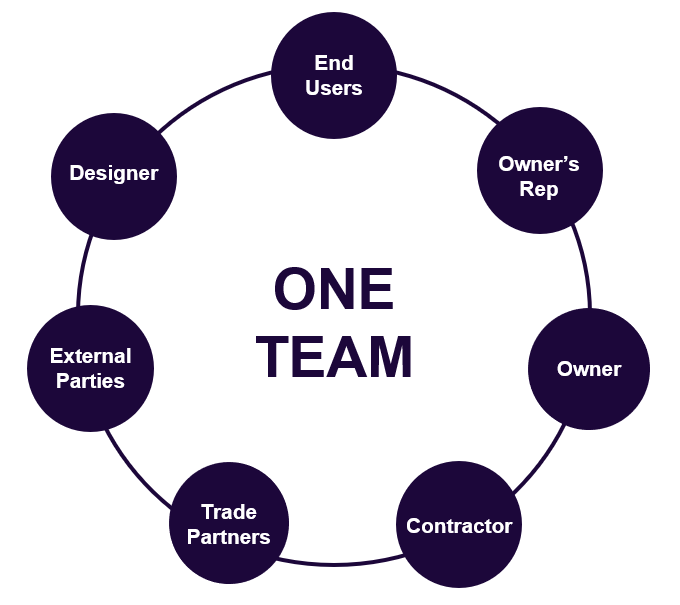The Importance of Stakeholder Alignment: Achieving Organizational Success

In today's complex business environment, stakeholder alignment plays a crucial role in achieving organizational success. By understanding and addressing the needs and expectations of various stakeholders, companies can foster positive relationships, enhance performance, and drive strategic decision-making. This article explores the significance of stakeholder alignment, its impact on organizational success, key principles for effective alignment, overcoming challenges, and measuring success.
{{resources-component-1}}
Understanding Stakeholder Alignment
Defining Stakeholder Alignment
Stakeholder alignment refers to the process of ensuring that the interests, goals, and expectations of all relevant stakeholders are aligned with the organization's mission and objectives. It involves engaging and communicating with stakeholders to build mutually beneficial relationships and achieve shared outcomes.
When it comes to stakeholder alignment, it is crucial to consider the diverse range of individuals and groups that may have an interest in or be affected by the organization's activities. These stakeholders can include employees, customers, suppliers, shareholders, government agencies, local communities, and even non-governmental organizations.
By actively engaging with stakeholders, organizations can gain valuable insights and perspectives that can inform their decision-making processes. This collaborative approach ensures that the organization takes into account the needs and expectations of all stakeholders, leading to more effective and sustainable outcomes.
The Role of Stakeholder Alignment in Organizations
Stakeholder alignment is vital for organizations as it helps create a unified vision and fosters a sense of ownership among stakeholders. When stakeholders are aligned, they are more likely to support the organization's strategies, initiatives, and decision-making processes. This alignment can lead to increased trust, collaboration, and ultimately, organizational success.
When stakeholders are aligned, they become active participants in the organization's journey towards achieving its mission and objectives. They are more likely to contribute their expertise, resources, and networks to help the organization succeed. This collaborative effort can result in innovative solutions, improved performance, and a competitive advantage in the marketplace.

Furthermore, stakeholder alignment can enhance the organization's reputation and credibility. When stakeholders see that their interests are being considered and their voices are being heard, they are more likely to view the organization as trustworthy and responsible. This positive perception can attract new stakeholders, strengthen existing relationships, and open doors to new opportunities.
Stakeholder alignment also plays a crucial role in managing risks and resolving conflicts. By involving stakeholders in the decision-making process, organizations can identify potential risks and address them proactively. Additionally, when conflicts arise, a strong foundation of stakeholder alignment can facilitate constructive dialogue and negotiation, leading to mutually beneficial resolutions.
In summary, stakeholder alignment is not just a buzzword or a trendy concept. It is a fundamental principle that organizations should embrace to thrive in today's complex and interconnected world. By aligning the interests, goals, and expectations of all stakeholders, organizations can build strong relationships, drive innovation, and achieve sustainable success.
The Impact of Stakeholder Alignment on Organizational Success
Enhancing Business Performance through Stakeholder Alignment
Achieving stakeholder alignment can significantly impact business performance. When stakeholders are aligned with the organization's goals, they are more likely to actively contribute to its success. This alignment can result in improved productivity, innovation, and overall operational efficiency.
For instance, when stakeholders are aligned, they are more likely to share a common vision and understanding of the organization's objectives. This shared understanding fosters collaboration and cooperation among stakeholders, leading to increased productivity. When employees, customers, suppliers, and other stakeholders are all working towards the same goals, they can leverage their collective knowledge and expertise to find innovative solutions and drive the organization forward.
Moreover, stakeholder alignment can also enhance operational efficiency. When stakeholders are aligned, there is a greater sense of clarity and focus on the organization's priorities. This clarity helps streamline processes and eliminate unnecessary tasks or redundancies, resulting in improved efficiency and cost savings. Additionally, aligned stakeholders are more likely to have a shared commitment to continuous improvement, leading to the implementation of best practices and the adoption of new technologies or strategies that can further enhance operational efficiency.
Stakeholder Alignment and Strategic Decision-Making
Stakeholder alignment is critical for effective strategic decision-making. By involving and considering the perspectives of all relevant stakeholders, organizations can make more informed decisions that reflect the needs and expectations of those affected by the outcomes. This alignment minimizes the risk of overlooking crucial factors and enhances the likelihood of successful decision implementation.
When stakeholders are aligned, their diverse perspectives and expertise can provide valuable insights and alternative viewpoints that can enrich the decision-making process. For example, involving employees in strategic decision-making can tap into their frontline experience and knowledge, helping to identify potential challenges or opportunities that may have been overlooked. Similarly, engaging customers and suppliers in the decision-making process can provide valuable market insights and help ensure that the organization's decisions align with customer needs and expectations.
Furthermore, stakeholder alignment in strategic decision-making can also lead to increased stakeholder buy-in and support for the decisions made. When stakeholders feel that their perspectives have been considered and their voices have been heard, they are more likely to support and actively participate in the implementation of those decisions. This buy-in and support can help overcome resistance to change, facilitate smoother implementation, and ultimately increase the likelihood of successful outcomes.
In conclusion, stakeholder alignment plays a crucial role in organizational success. It enhances business performance by fostering collaboration, driving innovation, and improving operational efficiency. Additionally, stakeholder alignment in strategic decision-making ensures that decisions reflect the needs and expectations of those affected, minimizes the risk of overlooking crucial factors, and increases stakeholder buy-in and support. Organizations that prioritize stakeholder alignment are better positioned to achieve their goals and thrive in a dynamic and competitive business environment.
Key Principles for Effective Stakeholder Alignment
Identifying and Analyzing Stakeholders
Successful stakeholder alignment begins with accurately identifying and analyzing the stakeholders involved. This involves understanding their interests, influence, and potential impact on the organization. By mapping out stakeholders and their relationships, organizations can develop tailored strategies to engage and align them effectively.
When identifying stakeholders, it is important to consider both internal and external parties. Internal stakeholders may include employees, managers, and shareholders, while external stakeholders can range from customers and suppliers to government agencies and community groups. Each stakeholder group may have different expectations and requirements, so a comprehensive analysis is crucial for effective alignment.
Furthermore, analyzing stakeholders goes beyond just identifying them. It involves assessing their level of influence and power within the organization. Some stakeholders may have a high level of influence due to their position or expertise, while others may have a lower level of influence but still hold valuable insights. Understanding these dynamics helps organizations prioritize their engagement efforts and allocate resources accordingly.
Building Trust and Open Communication
Trust and open communication are essential for stakeholder alignment. Organizations must establish transparent and inclusive channels of communication to foster dialogue, exchange ideas, and address concerns. Regular updates, feedback mechanisms, and active listening are vital in building trust and maintaining alignment.
Building trust with stakeholders requires consistent and reliable communication. Organizations should provide timely updates on relevant issues, projects, and decisions. This helps stakeholders feel informed and involved in the organization's activities. Additionally, feedback mechanisms such as surveys, focus groups, or one-on-one meetings allow stakeholders to express their opinions and contribute to the decision-making process.
Active listening is another crucial aspect of building trust. Organizations should actively seek out and consider stakeholder perspectives, concerns, and suggestions. By demonstrating that their input is valued and taken into account, organizations can foster a sense of ownership and collaboration among stakeholders.
Aligning Stakeholder Interests with Organizational Goals
Aligning stakeholder interests with organizational goals requires a deep understanding of both. By identifying common areas of interest and shared objectives, organizations can design strategies that create value for all stakeholders. This alignment increases the likelihood of stakeholder support and commitment to the organization's mission.
Identifying common interests between stakeholders and the organization involves finding areas where their goals overlap. For example, a company may have a goal of reducing its environmental impact, while environmental advocacy groups may have a goal of promoting sustainable practices. By aligning their interests, the company can work together with these groups to develop environmentally friendly initiatives that benefit both parties.

Furthermore, organizations should consider the potential trade-offs and conflicts that may arise when aligning stakeholder interests with organizational goals. It is important to manage these conflicts proactively and find win-win solutions that address the concerns of all parties involved.
In conclusion, effective stakeholder alignment requires a thorough understanding of stakeholders, building trust through open communication, and aligning their interests with organizational goals. By following these key principles, organizations can foster strong relationships with stakeholders and achieve greater success in their endeavors.
Overcoming Challenges in Stakeholder Alignment
Dealing with Conflicting Stakeholder Interests
Conflicting stakeholder interests are common in organizations. To overcome this challenge, it is crucial to engage stakeholders in dialogue and find common ground. Seeking compromise, actively involving stakeholders in decision-making processes, and transparently communicating trade-offs can help resolve conflicts and maintain alignment.
Navigating Stakeholder Power Dynamics
Power dynamics among stakeholders can complicate the alignment process. Organizations must be mindful of varying power dynamics and ensure that the interests of less influential stakeholders are adequately considered. By fostering an inclusive and equitable approach, organizations can navigate power dynamics and foster stakeholder alignment.
Measuring Stakeholder Alignment Success
Key Indicators of Successful Stakeholder Alignment
Measuring the success of stakeholder alignment is crucial to evaluate its impact and make improvements. Key indicators include stakeholder satisfaction, commitment level, and engagement. Regular surveys, feedback mechanisms, and performance metrics can help gauge the effectiveness of stakeholder alignment initiatives.
The Role of Continuous Improvement in Stakeholder Alignment
Stakeholder alignment is an ongoing process that requires continuous improvement. Organizations should regularly evaluate and refine their approaches to aligning stakeholders. By learning from past experiences, adapting strategies, and being proactive in addressing emerging challenges, organizations can continuously enhance stakeholder alignment and drive organizational success.
In conclusion, stakeholder alignment is vital for achieving organizational success. By understanding stakeholder needs and expectations, fostering positive relationships, and aligning interests with organizational goals, organizations can enhance performance, drive strategic decision-making, overcome challenges, and measure success. Stakeholder alignment is a dynamic process that requires ongoing efforts and continuous improvement. Embracing stakeholder alignment as a cornerstone of organizational strategy can pave the way for sustainable growth and prosperity.




